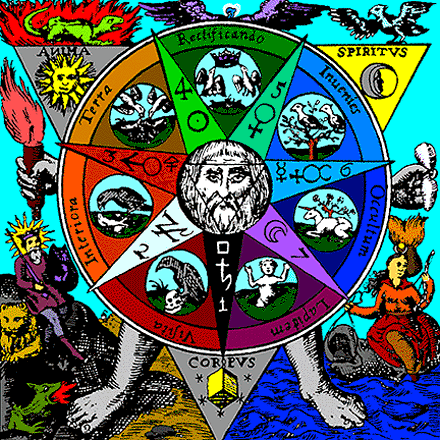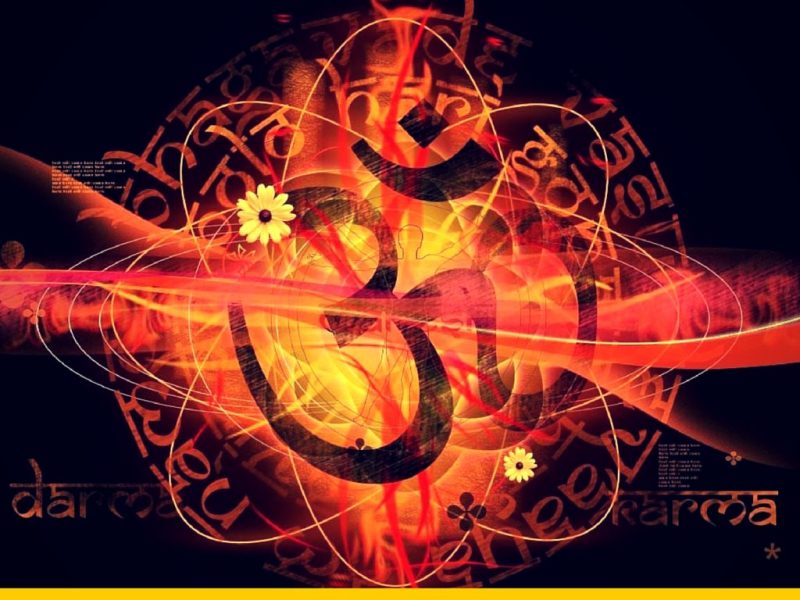The alchemical tradition from the Western perspective developed a philosophy and system of spiritual growth which was shrouded in symbolism. Part of the reason much of the material from that time was communicated in such symbolically dense terminology was the need to hide the true meaning from church authorities. The work of Carl Jung, M.D., in the early twentieth century led to the revitalization of much of the symbolism and artwork of the alchemists. His suggestion was that the alchemists were encoding deep psychological symbolism in the spiritual imagery.
Many of the diagrams and images developed by the alchemists showed mandala-like patterns that were quite similar in form to the Yantras from Eastern paths. These images tend to flood the mind with symbolic expression, such as the image of the Azoth shown below. It can be used as a focus of meditation, much like the Yantra image from an earlier post.
The four fold symmetry, three fold symmetry and seven fold symmetry have specific meanings the alchemical literature. Dennis Haucks “The Emerald Tablet” is one of the most user friendly books to introduce the layers of meaning.




